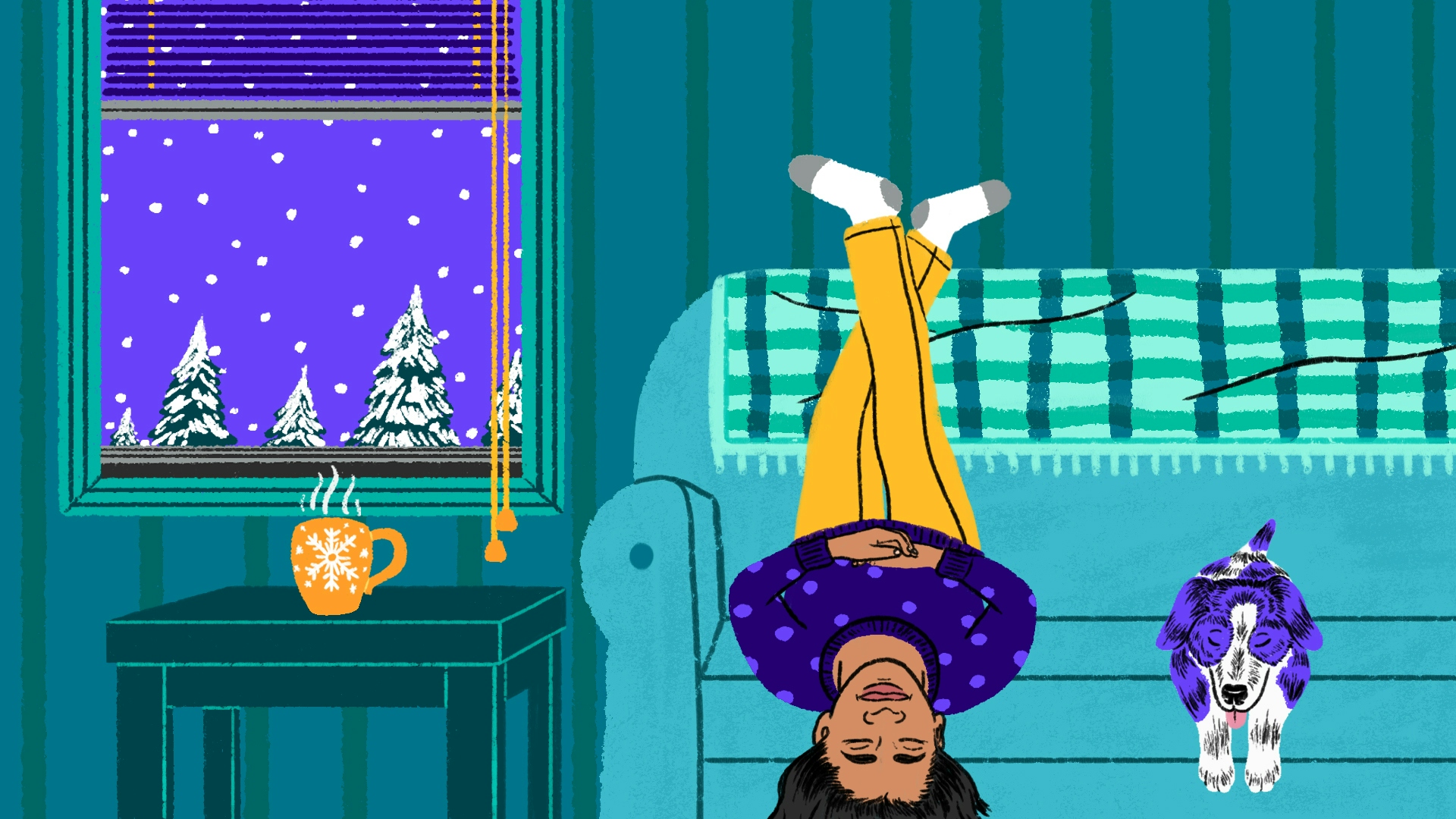The Story
Seasonal affective disorder has the most appropriate acronym ever: SAD. And daylight savings time might make it even sadder.
Why is that?
As we lose daylight this time of year, that might hurt your sleep schedule (because your circadian rhythm gets thrown off), which could lead to mood disorder episodes. Especially if you’ve experienced seasonal depression before. SAD is most common around the holidays but sometimes people experience it the other way around, in the summer.
Back up. What exactly is seasonal affective disorder, and do I have it?
It’s a form of depression that affects people during the same season every year (most often in fall and winter). Experts say darker and colder days are to thank. It affects around 5 percent of the US population, and largely women. Symptoms are consistent with depression and include things like irritability, difficulty concentrating, hopelessness, and low energy. If you suffer from fall and winter SAD, you may also feel super tired, and crave carbs (more than usual).
Well, that’s me all the time this year.
You’re not alone. Studies show that the proportion of Americans exhibiting symptoms of depression has increased dramatically since the pandemic started—all the more reason to be on alert for the onset of SAD.
Tell me how to make it better.
Therapy with a professional might help you learn to manage it. Or you can try one of these at-home remedies:
For when you realize your step count is at 20…Take a walk. This probably seems like obvious advice, but exposure to sunlight is key to fighting SAD. So is exercise. Two birds, one pedestrian stone. Try to schedule your walks to hold you accountable. If you don’t have time for a walk, sit by the window. Because when it comes to SAD, some sunlight is better than no sunlight.
For when the walk doesn’t do it for you…Leave the light on. Light therapy—conducted with exposure to a lamp or box that emits bright light—is a proven tool for combating SAD. The device is meant to be as good as natural light and is most effective in the AM. Turns out not all light therapy is created equal, and it’s not meant for everyone. Here’s where we remind you to talk to a medical professional about whether light therapy may be right for you, and to do more research on the treatment.
For when you need to talk it out…There are professionals for that. Look into services like Better Help and Frame to find a therapist that works for you. More on teletherapy here. Reaching out to friends and family can also help ease feelings of isolation.
theSkimm
Winter is coming. Whether or not you’ve dealt with SAD before, it’s important to know you’re not alone in the dark. And that there are resources available to help.
Subscribe to Skimm Well
Sign up here to receive our wellness newsletter filled with actionable advice, expert-vetted content, product recs, and more — delivered directly to your inbox.
